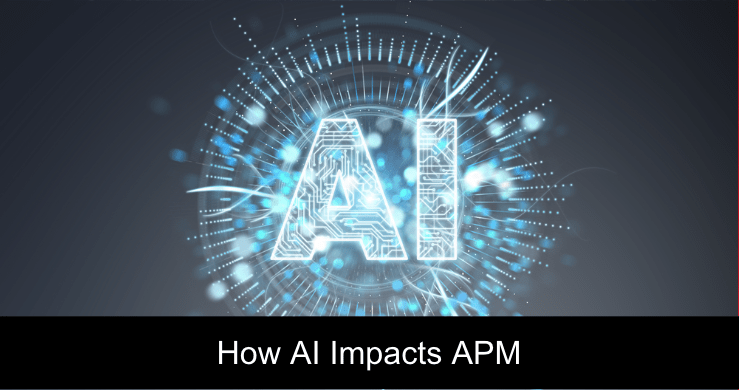How Artificial Intelligence Impacts APM
AI is rapidly transforming how businesses operate; our article “3 Ways To Achieve Digital Transformation With AI” explains that the technology simulates human intelligence to execute capabilities like learning, problem-solving, optical recognition, speech recognition, and planning.
One key area that AI is transforming is application performance monitoring (APM) software. Websites, mobile apps, and business software use APMs to monitor performance metrics. It ensures that your networks, servers, and database execute their functions without error. Such is the demand that the global market for APM software is projected to be worth $13.3 Billion by 2027. With more businesses taking advantage of the performance capabilities of AI, many are using it to improve their APM software. Below are three ways AI is making APM more efficient
Allows for faster troubleshooting
The relationship between businesses and technology has evolved rapidly, with an article by Maryville University on software developers highlighting how global computer systems rely on massive data sets to function correctly. While this has made accessing information much easier and more convenient, it has also made troubleshooting a much more time-intensive process. One way that companies can find any issues is through the use of an APM. An APM monitors performance by looking at the applications and server components. It inspects IT servers to evaluate their availability and response time. Examining an application’s behaviors and performance can determine what problems need to be addressed.
Due to the vast amounts of data available, manually troubleshooting any issue using an APM has become highly time intensive for companies, especially smaller businesses. AI can streamline this process by automating the interpretation of trace data through an APM using statistical models and pattern recognition. This immediately alerts the company to any irregular behavior in the traces. As such, it can lead developers to the root causes of an issue much faster.
Predicts errors before they happen
When your environment’s scale constantly fluctuates, it’s difficult to determine what can cause problems manually. One of the top trends for future APMs is using AI to predict errors. Using historical APM data, AI can predict how an application will perform under certain circumstances.
Machine learning can solve this issue by detecting anomalies and predicting trends. They can alert IT teams to oncoming conditions that may cause errors or latency. But beyond this, AI can also provide solutions to prevent this onslaught by directing them to their causes. This way, they can prevent excess traffic in certain areas before they occur.
Enhances the user experience
APMs are excellent at overseeing things at a server level, so they know how you can fix your applications to tackle problems as service providers. However, the limitations of the types of data they’re able to track may make it difficult to understand what’s happening from a user’s perspective or what areas are performing in desirable ways. For example, they often need to be programmed to detect user activity indicators, such as swipes or clicks, making it difficult for you to garner insights into the user experience.
AI allows more advanced monitoring capabilities with improved data collection functions. It can track how a user utilizes your application by looking at the data they’re entering and what data the app is returning to them. It provides context that an APM is only sometimes able to provide. Through an AI’s capacity to learn through pattern recognition, it can identify what actions typically lead to undesirable outcomes. This data is integral as Loughborough University states that UX designers must prioritize industrial design and ergonomics to design effective applications. Using this contextual data can help them with just that.
Conclusion – How AI Impacts APM
APM is integral for businesses to optimize how their applications are performing. With AI, companies can approach APM functions from a solutions-based perspective that detects errors and shows them how to fix them.
Post solely for the use of fusion-reactor.com By Kyla George










